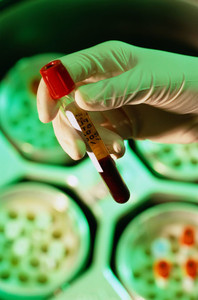In an article by Dr Claire Morgan and Dr Daryl Fernandes of Ludger, published in IPI of Autumn 2009, it is shown how both the original drug manufacturers and the designers of follow-on biologics could produce biobetter monoclonal antibodies (MAbs) through glycoengineering. (see also Modify Fc fucosylation and β-galactosylation for biobetter MAbs, Design out NeuGc, Fab glycosylation for biobetter MAbs, Design out Gal-α(1,3)-Gal for biobetter MAbs, Strategy and tools for building glycoengineered biobetter MAbs and Ludger’s GTO-QbD: Defining glycovariant biobetter MAbs)
When is a glycoengineered biobetter commercially better than a biosimilar?
Biosimilars/Research
|
Posted 28/01/2010
 0
Post your comment
0
Post your comment

Dr Morgan and Dr Fernandes state that their knowledge of structural-activity relationships for MAb glycosylation is now sufficiently advanced that improving existing drugs by glycoengineering is relatively straightforward. Given this, the choice between producing a biosimilar or a glycoengineered biobetter MAb is essentially a marketing one.
The authors write that for a biosimilar, you would pick a successful original drug coming out of its exclusive period, aim to make as close a copy as possible and reduce both manufacturing costs and selling price. In this case, your main advantages over the originator is that you have a lighter R & D effort than they had (you build on their efforts) and you can gain benefit from advances in manufacturing know-how to reduce your production costs (these are also reasons why some innovators object to the principle of biosimilars). However, your problems include the following: (a) You may experience technical difficulties in reproducing the glycosylation pattern of the original drug – you would be constrained to use a similar or identical cell expression system; (b) The regulatory authorities may classify it as a different but related drug - so you could lose the ability for physicians to prescribe your product as a generic substitute, weakening your commercial position; (c) You are likely to have difficulties in proving complete equivalence of safety and efficacy profiles (it is easier to prove differences than equivalence in the clinic); (d) Your drug is likely to be one of several biosimilars, all of which compete with the original drug on price but without the innovator’s brand recognition.
According to Dr Morgan and Dr Fernandes, the case for developing biobetters is generally more compelling. The main problems for follow-on companies would be the high costs of developing a new drug, building brand recognition and gaining market share from the originator. However: (a) You have greater freedom in choosing your expression system (including non-mammalian cell lines or whole-organisms). This increases the likelihood of significantly lowering manufacturing costs; (b) If your drug has clear clinical benefits (e.g. it overcomes adverse reactions found with some patients treated with the original drug) then you can position it in the market as a ‘new and improved’ version, and may have less pressure to reduce the price per dose, so increasing your profitability; (c) You could build a stronger Intellectual Property (IP) position if your product has clearly distinct glycosylation from the original drug or other copy drugs. Of course, if you are the originator you could also make a biobetter as the next-generation of your own drug and enjoy even greater advantages over follow-on biological competitors.
Reference:
Claire Morgan and Daryl Fernandes. Designing Biobetter Monoclonal
Antibody Therapeutics By Glycoengineering. International Pharmaceutical Industry (IPI) p. 38-44. Autumn 2009.
Source: International Pharmaceutical Industry (IPI)
News
FDA approves six denosumab biosimilars
EMA recommends approval for four biosimilars targeting three therapies
General
Samsung Bioepis wins Pyzchiva case; Regeneron patent rulings threaten foreign biosimilars
Chinese biosimilars go global: growth, partnerships, and challenges
What is the future for the US biosimilar interchangeability designation

Biosimilars/Research Posted 05/06/2025
Biosimilar clinical efficacy studies: are they still necessary?

Biosimilars/Research Posted 27/05/2025
The best selling biotechnology drugs of 2008: the next biosimilars targets








Post your comment